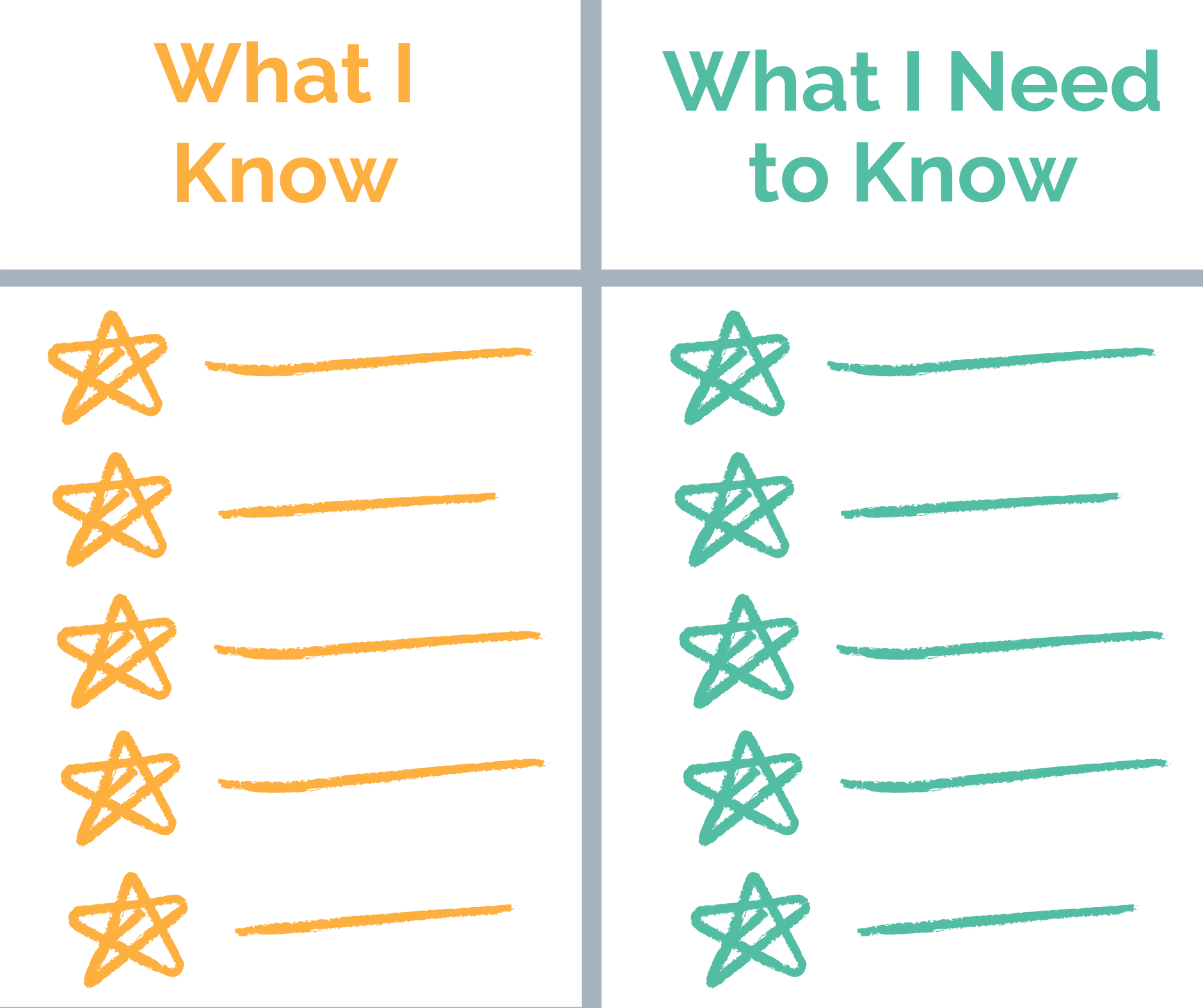
Have you ever put hours into planning a new unit, feeling excited about the content and activities, only to have students express disinterest from day one? It’s so discouraging!
This project-based learning activity can turn your entire unit 180 degrees–providing opportunities for students to direct their learning! Now, I’m not promising you will have 100% of your students excited and engaged in 100% of your lessons. But I do believe this will lead to improvement in many areas of student engagement, collaboration, and learning. And improvement is what education is all about!
What is a “Know and Need-to-Know” List?
The know and need-to-know list is a central tenet of project-based learning. It is used at the start of a project or unit to drive student learning, track progress, and provide next steps. Simply put, it’s a two-column chart where students list what they know and need to know about a topic.
How to use it
Start by creating two lists–you can use a whiteboard in the classroom, a Google Doc, or a digital collaboration tool like Padlet or Jamboard.
Title the first column “Know: What do I already know about this topic?”
And the second column: “Need-to-know: What do I need to know about this topic? What do I need to know to complete this project?”

Upon launching your new project or unit, students will start with the know and need-to-know lists. For example, when beginning a unit on civil rights, you may launch the unit with a video or guest speaker that gets students excited about the content and the project they will be completing, for example, creating their own short film. With the problem in mind, (a driving question is helpful here), students begin adding to the list of what they already know about the topic and what they will need to know.
The know and need-to-know list helps planning too
Need-to-knows will aid you as the instructor to plan the content and workshops your students will need. Did several students share that they need to know how to add photos into their project? Does another student already do this well? In this case, you can have students teach each other in a workshop format. Do your students realize they need to know how to calculate the volume of an object for their math project? Here’s your next lesson! With the need-to-know list, students themselves are determining what they need to learn, rather than the teacher always driving the learning. Then, throughout a lesson, refer to the list to show how the day’s content connects to what students identified as needs.
Track progress
The know and need-to-know list is a living document. You will return to it throughout your unit, maybe daily or weekly. As students work through their project, they will have new questions to add to the need-to-know list. Other topics can be moved over to the “know” column, providing documentation of what has been learned throughout the unit.
Adaptations
In addition to a class list to which students contribute, consider having students develop their own personal know and need-to-know list. This can serve as a bell-ringer and end-of-class reflection, helping students put new thoughts and questions on paper and helping them keep track of what they’ve learned.
What’s next?
View all our free project-based learning resources here. And head to cbdconsulting.com/pbl to learn about our PBL Academy for teachers!


